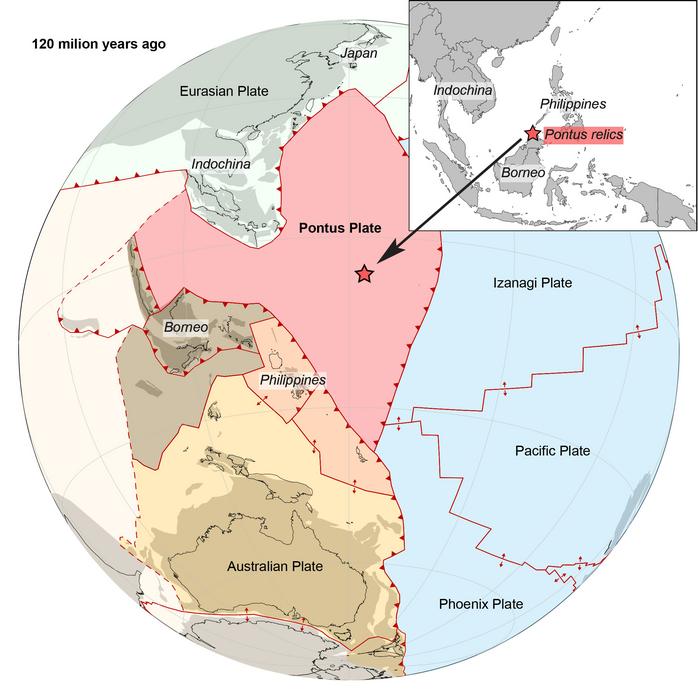A long-missing plate that once supported what is now the South China Sea has been rediscovered 20 million years after it disappeared.
This plate is only known from a few rock fragments taken from the mountains of Borneo and the ghostly remains of a giant slab found deep in the Earth’s mantle. It is said that it was once one-fourth the size of the Pacific Ocean. Scientists named it the Pontic Plate because at the time it existed, it was under an ocean known as the Pontic Ocean.
Susanna van de Lagemaet, a doctoral candidate at Utrecht University in the Netherlands, told Live Science: “It’s amazing that we found the remains of a plate that we had no idea about.”
Van de Lagemaet and his colleagues originally studied the Pacific Plate, which lies beneath the Pacific Ocean. Tectonic plates are constantly moving relative to each other, and because oceanic plates have a denser crust than continental plates, oceanic plates are pushed beneath continental plates and disappear in a process called subduction. However, sometimes rocks from missing plates are incorporated into mountain-building events. These debris may indicate the location and formation of ancient plates.
Researchers were trying to find the remains of one of these ancient lost plates, known as the Phoenix Plate, while conducting fieldwork on the island of Borneo. Scientists can study the magnetic properties of rocks to learn when and where they were formed, van de Lagemaet said. The magnetic field surrounding the Earth is “trapped” in rocks as they form, and the field varies with latitude.
Related: When a supercontinent breaks apart, a fountain of diamonds will erupt from the center of the Earth.
But when researchers analyzed rocks taken from Borneo, they found something strange.
“This latitude did not match what we already know from other plates,” van de Lagemaat said.
To solve this mystery, she used computer models to study the region’s geology over the past 160 million years. Plate reconstructions show that there is a problem between present-day southern China and Borneo. The ocean, once thought to be supported by another ancient plate called the Izanagi Plate, was actually not on that plate. Instead, a rock from Borneo settled into the mysterious crevice.

The researchers discovered that the site was actually occupied by a previously unknown plate, which van de Lagemaat and her team named the Pontic Plate.
The reconstruction, published September 29 in the journal Gondwana Research, shows that the Pontic Plate formed at least 160 million years ago, but is probably much older. (Rock samples collected on the island of Borneo date back 135 million years.) Once huge, it steadily shrunk over its lifetime, eventually collapsing between the Australian Plate to the south and the China Plate to the north. It was pushed down and disappeared 20 million years ago.
A 10-year-old study conducted in the same lab also showed hints of the Pontus plate. The study looked at imaging the Earth’s mantle, the middle layer of the Earth where the subducted crust ends up. It showed a huge chunk of crust of unknown origin, but scientists at the time had no way of determining where it had come from, van de Lagemaet said. Now, it is clear that this crust is the remains of the Pontic plate.
Copyright 2023 live science, the company of the future. All rights reserved. This material may not be published, broadcast, rewritten, or redistributed.
